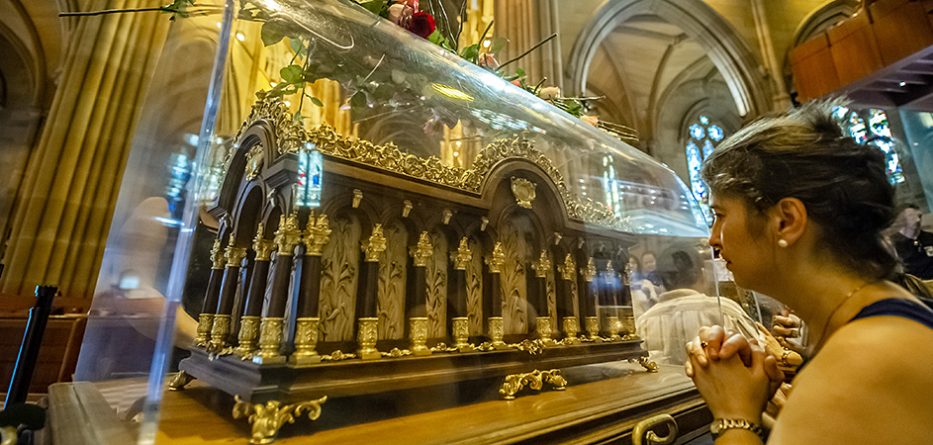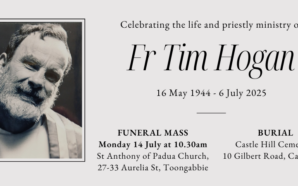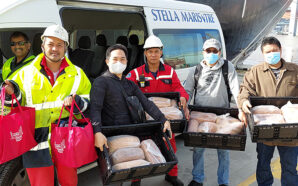When Angela Grounds received a precious container from her mum years ago, the parting gift came with a warning.
“Mum said to me, ‘Don’t ever lose it, this is St Thérèse’,” Mrs Grounds recalled.
That gift, a tiny circular box, housed a set of Rosary beads, and inside the crucifix at the tail of the beaded chain was a tiny reliquary, protecting a fragment of bone identified as being from St Thérèse of Lisieux.
The Rosary beads are a third-class relic, the class given to an item that is touching actual physical remains of a person, or a first-class relic.
Australians will have the opportunity to venerate the first-class relics of St Thérèse and her parents when they tour Australia for the next four months.
Those, like Mrs Grounds, fortunate enough to have third-class relics know the value of any item connected to St Thérèse.
Mrs Grounds’ holy heirloom has been in the family for at least two generations, possibly longer, but its origins are a mystery.
The only person with any information on the beads would be Mrs Grounds’ mum who, sadly, has dementia.
The theory is that the beads came into the family through a possible connection to St Thérèse’s mother St Zelie Guerin Martin.
“Basically, though, my grandma is a Guerin – she was born in Australia, her parents are Irish, but St Thérèse is a Guerin,” Mrs Grounds said.
“They reckon somewhere along the line those two families were one.”
Mrs Grounds said her late father, former Archdiocese of Brisbane employee Ted Taylor, tried to trace back a possible family connection to St Thérèse.
“But Dad didn’t go back that far,” she said.
Mrs Grounds’ mother also grew up attending Mass at Little Flower Church, Kedron, named after a popular name for St Thérèse, so liked to claim a family bond there.
But whatever the connection, Mrs Grounds said St Thérèse was an honorary family member, and her remains in the Rosary beads were safely stored in a dresser drawer at her Yeppoon home.
“I’ll probably pass it on to my daughter,” she said.
The cherishing of relics, whether first, second or third class, is one of the practices of the Catholic Church that bewilders the uninitiated.
Lismore Bishop Greg Homeming, who is a member of the discalced Carmelite order, the same as St Thérèse, addressed the most common question about relics in the lead-up to the family tour – why do Catholics venerate the remains of the dead?
“Of themselves, relics are not holy,” Bishop Homeming said.
“It is more correct to say, they are the remains of a holy person, a saint, and, on account of their connection to that holy person, are revered.”
He likened the veneration of the remains of saints to the care and respect of sacred sites across Australia, such as places of significance to Indigenous Australians, or a cathedral that has stood for hundreds of years.
Souvenirs are another similar item that have the ability to “move us to remember a loved one or an event”.
“In some cases it can even encourage us to live according to higher values,” Bishop Homeming said.
“The relics of saints fall into this category.
“Relics are physical remains which connect us with the goodness and holiness of the saint.
“They remind us of the saint and, through the saint, move us to live better lives.”
Bishop Homeming said the three family members whose relics are visiting Australia this week are a reminder that “holiness and goodness does not exist in a vacuum”.
“If you see a good child, you can generally presume that this goodness comes through the parents,” he said.
“Jesus was taught by Mary and St Joseph. St Therese is the daughter of holiness.
“The Church recognised that goodness is caught, and so investigated her parents, and found two saints.”
Bishop Homeming said all Christians could learn from the holy example of the Martin family.
“Being a family, the Martins prove that the family is the seed ground of holiness and goodness,” he said.
“We can learn from them.”
The relics of St Thérèse of Lisieux will visit Our Lady of Mount Carmel Parish, Wentworthville and stay overnight at St Patrick’s Cathedral, Parramatta on 4 March 2020.
By Emilie Ng. Reproduced with permission from The Catholic Leader, the news publication of the Archdiocese of Brisbane.








